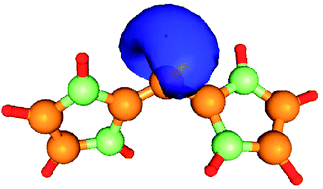Molecular electrostatic potentials of divalent carbon(0) compounds†
Abstract
The molecular electrostatic potentials of divalent carbon(0) and divalent carbon(II) compounds are calculated and the results are compared with theoretically predicted

* Corresponding authors
a
Department of Chemistry, University of Pune, Pune, India
E-mail:
gadre@chem.unipune.ernet.in
Fax: +91 (0)20 2569 1728
Tel: +91 (0)20 2560 1228
b
Fachbereich Chemie, Philipps-Universität Marburg, Marburg, Germany
E-mail:
frenking@chemie.uni-marburg.de
Fax: +49 (0)6421 282 5566
Tel: +49 (0)6421 282 5563
The molecular electrostatic potentials of divalent carbon(0) and divalent carbon(II) compounds are calculated and the results are compared with theoretically predicted

 Please wait while we load your content...
Something went wrong. Try again?
Please wait while we load your content...
Something went wrong. Try again?
M. M. Deshmukh, S. R. Gadre, R. Tonner and G. Frenking, Phys. Chem. Chem. Phys., 2008, 10, 2298 DOI: 10.1039/B803068E
To request permission to reproduce material from this article, please go to the Copyright Clearance Center request page.
If you are an author contributing to an RSC publication, you do not need to request permission provided correct acknowledgement is given.
If you are the author of this article, you do not need to request permission to reproduce figures and diagrams provided correct acknowledgement is given. If you want to reproduce the whole article in a third-party publication (excluding your thesis/dissertation for which permission is not required) please go to the Copyright Clearance Center request page.
Read more about how to correctly acknowledge RSC content.
 Fetching data from CrossRef.
Fetching data from CrossRef.
This may take some time to load.
Loading related content
